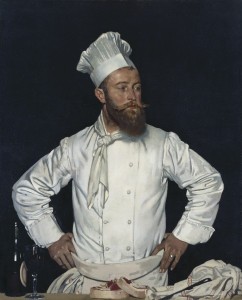Painting in Partnership and its team of craftsmen were asked this week to volunteer its painting and decorating services to help bring to life numerous stage set elements for The Christmas Schooner, a Holiday musical having its opening performance the day after Thanksgiving in Palatine.
We had two and a half days to get the painting and decorative finishing done, including the main set element: the Schooner! To help us get everything done, we were offered two volunteers that we gladly put to work. And then there was Olaf, a white-bearded older gentleman with a thick German accent, who was wearing a captain’s hat and doing carpentry and assembling different things on the stage. He looked like he definitely belonged on this ship! He later told me that, when he was sixteen, his father asked him what he wanted to do in life. He said: “I want to be a ship captain.” He father said: “You belong on a ship; you were made on a ship!
While I was painting with my crew, I noticed how Olaf was going about putting together two climbing ladders for the mast. He was using rope and sticks that he had cut to size, each of them shorter than the one below, in order to match the distance between the ropes. When he was done, he asked me for some black paint and a brush so he could distress the rungs of the ladders to give them a “more authentic look.” After the final touches to the ladders, he said: “Now, the Schooner looks more “shippy.”
After watching all this happen from the corner of my eye, I said to myself: “Now, here is a real craftsman!” What I saw there is a man motivated by one thing: doing everything he can to contribute to the enjoyment and the quality of the experience of the folks who will come to see the performances of The Christmas Schooner. That attitude is at the core of what makes a true craftsman, in any field of endeavor. Heart and passion is what drives a craftsman to perfect his/her techniques, acquire knowledge and use everything at his/her disposal to achieve that main purpose.
I invited Olaf to join my crew for the following day’s work. That next day, Olaf demonstrated another aspect of being a craftsman: respect for another craftsman’s knowledge. He was eager to join the decorating of the hull of the ship. He said that it looked fun and easy. However, Olaf quickly realized that even though it seemed easy, there was a lot more to it than met the eye. Wanting foremost to be of assistance, he retired from the decorative painting tools and limited himself to rollers and brushes for the rest of the day. I was very impressed with that.
As a team of craftsmen, those are qualities that we, at Painting in Partnership, strive to embody on every painting project. Our primary focus is to enhance the client’s quality of life through the painting and decorating work we do.









 Follow
Follow






